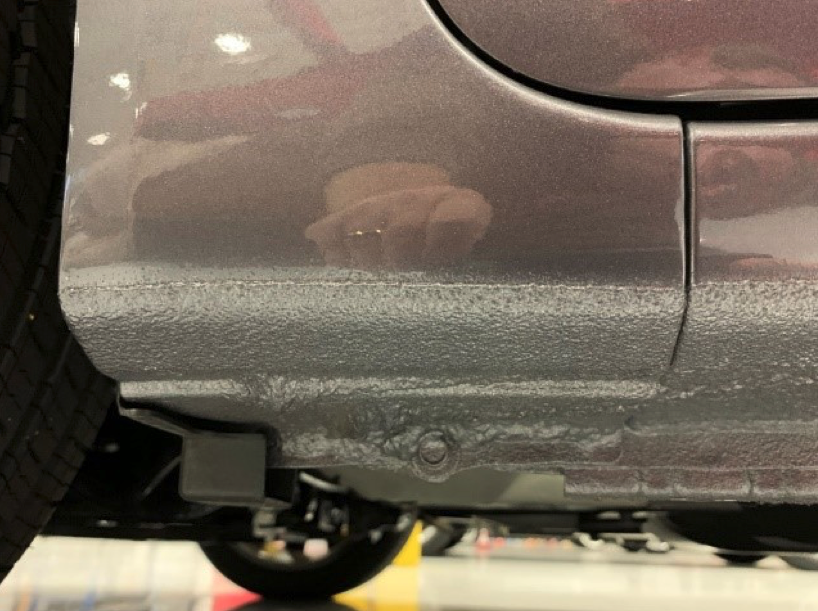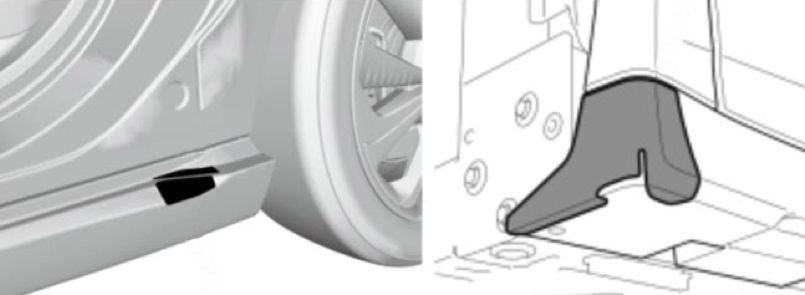The paint on our vehicles is the first thing we notice, so it tends to be a top concern for our customers in Saugerties when it comes to repairs. Modern cars are being designed with new techniques and more complex finishes that require additional steps. This is why car manufacturers are providing detailed and specific instructions on how to recreate the original finish in the event of paint repair. Not all body shops are created equal and go through the same lengths we do at Starr Collision & Body Shop to make sure you get a quality paint finish that wont fade, chip or crack.
Honda published guidelines in their self-published Body Repair News in March to guide auto repair technicians about how to deal with corrosion protection for Honda vehicles. We will outline the main points here for you and provide an easy to understand breakdown so that you will know what you can expect from us if we repair your Honda or any other brand of vehicle.
Honda says: “Stone chips are a leading cause of corrosion hot spots.”
Anti-chip primer
What Honda says:
All good body shops will refer to the OEM repair procedures to be 100% certain what areas to apply an anti-chip primer. Next, they will check the repair procedures to ensure all measures are taken for sufficient protection.
“Each paint manufacturer has its own formulation for matching the durability of the factory anti-chip primer, some call for additional sealers in these areas. Some call for an increased mil thickness of the clear coat. And some call for catalyzation of the base coat. Always check with your paint manufacturer for recommendations of products and procedures.”
What That Means To You And Your Repair:
Honda has a list of recommended manufacturers of auto paint that is approved to use for the repair of their brand of vehicles. Every collision repair shop utilizes their own preferred system which is made by and purchased from the paint manufacturer. Think of this system of the actual equipment used for the auto paint process. The most popular system and paint providers are Akzo Nobel, BASF, Sherwin Williams, and PPG.
Each of these listed paint manufacturer have unique paint formulations as part of their system. Honda states that as long as we follow the approved paint system directions, we will be compliant with Honda’s recommendation. Depending on the system used, it may mean additional applications of a sealer or needing to apply more layers of the clear coat.
What Honda Says: If the paint manufacturer doesn’t have such a procedure, then repairers should spray light coats of 2K primer surfacer/sealer, allowing appropriate flash time between coats until a thickness of 20 microns (0.79 Mils) is achieved. You can’t just cut corners and use Honda’s formula instead of putting in the time to research the paint manufacturer’s.”
What That Means To You And Your Repair:
Sometimes there are no written procedures available for certain paint repairs, however, there should always be a formal protocol that is followed during every paint repair. It is important when handling paint that cleanliness and quality are the forefront of the process. Honda feels so strongly about this fact that they specifically state not to cut corners. You would think this should go without saying, but you would be shocked how many body shops do not follow procedures and cut corners.
Paint Thickness
What Honda Says: “The main purpose of refinishing products is to protect the surface from corrosion,” Honda wrote. “To accomplish this, the proper mil thickness must be achieved.”
“Refer to your paint manufacturer for minimum and maximum mil thickness recommendations. A digital mil thickness gauge must be used to ensure these recommendations are followed.”
What That Means To You And Your Repair:
Honda requires that all body shops use a mil gauge to make sure that there is enough paint thickness on the car. The reason for this mil gauge is because paint thickness can not be seen with the naked eye. This tool is hand held and provides a reading that in this case is 20 microns or .79 mils is the recommendation.

Intermediate chip guard
A feature you may have not noticed on your car until now may be what we call the chip guard. If you look down, near the rocker panels or towards the bottom of your doors, you’ll notice a texture of the surface that looks rough. This is an extremely important feature despite its lack of prevalence meant to protect your car from rust due to rocks hitting the surface causing chipping. It is crucial if it needs to be repaired to replicate it exactly to the manufacturers specifications.
What Honda Says:
Intermediate chip guard helps prevent chipping damage from flying stones and is commonly applied to the side sill areas of the vehicle. It is a chloride vinyl resin material that is granular in appearance and applied between 100 and 200 microns thick (4 to 8 Mils).
Matching the factory-applied function and appearance may take practice and use of multiple spray-out panels. Never apply chip guard over bare metal.
What That Means To You And Your Repair:
This is not an easy finish to replicate exactly on the first try, which is why tests and practice should be performed. A decent body shop will create multiple test spray panels also known as spray outs. This not only allows us to get the exact finish your specific car has, but replicate the exact same finish over multiple surfaces.

Protective tape
Another feature you may not have noticed around the corners of your car’s lower panels is what looks like tape. Honda specifically says that clear tape should be reapplied if a repair needs to be performed to that area.
What Honda Says:
Honda stipulates that it’s required to replace the clear protective tape used on some of its models. This tape is typically located in areas like the “lower doors, the dogleg area of rear outer panels, and the fenders.” You may be wondering why this clear tape is so important? This clear tape “material” is what protects the paint on your vehicle from chips.
“It is important to remove and replace the tape anytime a panel is repaired, refinished, or replaced,” Honda wrote. “Refer to the applicable service information for the location of the tape and the application procedure. … Never paint over the protection tape.”
What That Means To You And Your Repair:
This is an easy area of repair where a sloppy body shop can cut a corner to save money. However, this leads to an imperfect repair and something you want to be sure is completed.
Starr Collision and Body Shop never cuts corners and excels at a variety of vehicle repairs that follow the manufacturers’ guidelines (OEM). Let us help you with your auto repair process! We can be reached at 845-247-7411. If you’d like to schedule an appointment or to get an online quote, click here to get started!



